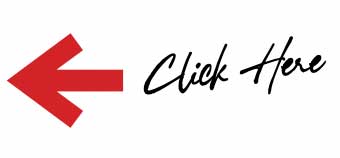Pattern drafting is an exciting sewing skill that lets you design clothes that fit your body and match your style. This guide covers basic pattern drafting and shares ideas on how to create custom clothing. Let’s dive into the art of pattern drafting and transform your ideas into beautifully crafted clothing.
What is Basic Pattern Drafting?
Pattern drafting involves creating a template for cutting fabric pieces used to assemble a garment. This template, known as a pattern, requires making precise measurements, drawing the pattern on paper, and then transferring it to fabric.
Why Learn Basic Pattern Drafting?
Pattern drafting allows for the creation of garments that are tailored to specific body measurements, ensuring a proper fit. This is especially important in custom-made clothing or when creating garments for individuals with unique body shapes. Learning this skill offers several benefits:
Achieve the Perfect Fit
Drafting patterns ensures that your finished clothes fit you perfectly. You won't need to rely on store-bought clothes that don’t fit your measurements.
Unleash Your Creativity
Pattern drafting allows you to bring your design ideas to life. This also lets you experiment with different styles, shapes, and details and frees you from pre-made patterns.
Save Money
Instead of spending money on new patterns for every project, you can draft your own. Additionally, you save money on patterns, so you can invest instead in high-quality fabrics or other sewing supplies.
Build Your Skills
The more you draft patterns, the more you sharpen your sewing skills. In addition, you also gain insights into how clothes are constructed, making you a more confident sewer.
Tools and Materials
To start pattern drafting, you’ll need the following tools and materials:
- Measuring Tape
- Pattern Paper
- Rulers
- Pencils and Erasers
- French Curve
- Scissors
Taking Measurements
Accurate measurements are essential to successful pattern drafting. You’ll need to learn how to measure the following:
- Bust
- Waist
- Hip
- Shoulder Width
- Arm Length
- Back Length
Basic Pattern Drafting Steps
Knowing how to draft basic patterns gives you better control over your designs and ensures your finished garments will fit comfortably. So, let’s get you started on your pattern drafting adventure!
1. Draft the Basic Block
Start by drafting a basic block, which is a simple pattern that forms the foundation for more complex designs. A typical basic block includes a bodice, skirt, and sleeve.
2. Add Design Elements
After drafting the basic block, start adding design details. For example, try incorporating features like darts, pleats, gathers, or extra seams.
3. Test the Fit
Once you’ve added your design details, test the fit by creating a practice piece, which is often called a muslin. This allows you to see how the pattern works with fabric and make any necessary adjustments.
4. Finalize the Pattern
Finally, you can finalize your pattern. At this point, make any last tweaks and ensure all your design elements are correctly incorporated. Lastly, transfer the finalized pattern onto your chosen fabric and proceed with cutting and sewing.
Drafting a Basic Bodice Block
Follow these steps to draft a basic bodice block:
1. Draw the Frame
Take the pattern paper and draw a rectangle. Then, match the height to the back length measurement you took earlier. Next, calculate half of the bust measurement for the width and add a bit extra for some allowance in the final fit.
2. Mark the Bust Line
Draw a horizontal line across the rectangle at the level where your bust will be. This step ensures that your garment fits correctly around the chest.
3. Mark the Waistline
Once the bust line is in place, mark the waistline by drawing another horizontal line across the rectangle at the waist level.
4. Draw the Armhole
Use your shoulder width and arm length measurements to sketch the curves for the armholes on both sides of the rectangle. This step ensures that the sleeves fit comfortably.
5. Add Darts
Finally, draw vertical lines for the waist darts, which help shape the bodice of your body.
Bringing Your Designs to Life
In conclusion, pattern drafting is valuable for anyone interested in sewing and garment making. Simply follow the steps outlined in this guide and keep practicing regularly. Soon, you’ll be drafting your custom garments. Start your pattern drafting journey today and unlock the full potential of your sewing projects!
Ready to start creating patterns that fit perfectly? Click here to explore more sewing projects and step-by-step guides!


